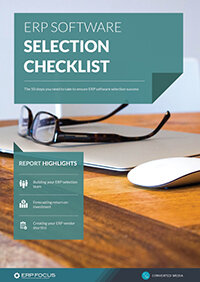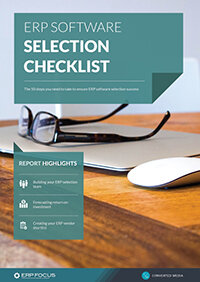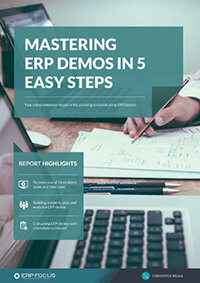Seven ERP selection statistics project managers should know
There are many statistics related to ERP selection and implementation. Some of them aren’t pretty.
Nevertheless, it pays to be as well-informed as possible when embarking on an ERP selection project. It might make for grim reading that ‘X number of ERP projects fail/overrun/break their budget’, but if you know what you’re up against you’ve got a better chance of being one of ones that ends up a success. Perhaps a pay rise awaits at the other end - who knows?
Use the statistics provided below to quantify your shortlist choices and avoid common ERP project manager mistakes.
1. Ease of use
You want a powerful system and at the same time you want your users to adapt to it as easily as possible. Fifty percent of respondents in one survey ranked ease of use as a top priority. GotERP.com says: “ERP software buyers fail to make 'ease of use' measurable criteria with weighted scoring during their software selection project. Leaving 'ease of use' as a subjective factor which then takes a back seat to other scored criteria increases software selection and implementation risk while at the same time decreases ROI.”
2. Amount of customization needed
70% of companies customized their ERP but only 5% said the modifications were major. This indicates that the need for major modification has decreased over the years, perhaps as the number of ERP options has expanded.
Use this 60 step ERP selection checklist to find the right software for your company
Can you use your chosen ERP right out of the box, or have you already decided that some customization will be necessary? Customization can be expensive and the customization can be obsoleted as the ERP updates the basic package. Think carefully what is right for your business - over-reliance on customization from the get-go can add unnecessary complications, so you may want to go for a system which fits your way of working more naturally.
3. Time to implement
The average total ERP implementation time is 18.4 months. Tier I implementations should be targeted for completion in nine months to two years. Tier II or Tier III implementation should be targeted for completion within six to nine months, according to Enterprise Resource Consulting.
Implementing any ERP is a long and challenging project. The quicker it is completed, the sooner you can begin to reap the benefits. Enterprise Resource Consulting says ERP implementations usually consume more time and money than expected.
4. Major disruptions
In 2014, the average duration of an ERP implementation was 14.3 months. 55% of projects experienced cost overruns and 75% experienced schedule overruns.
What is the tolerance in your organization for that disruption? Is your business in a position where a major disruption is desirable? Consider that enterprise software is now more disruptive than ever - analytics, speed, and agility are key to digital businesses and ERP must change to work in the new environment.
5. Cost
This might be the statistic most often searched for. WorkWise says you can expect to pay from $1,500 to $4,500 per concurrent user. Third-party licenses can add another 15%. A small to mid-size business can expect to pay $75 K to $750 K, which ought to pay for itself quickly.
6. Cloud vs on-premises
57% of companies were undecided on platform choice at the start of their selection project. More companies were actively seeking cloud ERP (26%) than on-premise ERP (16%), in line with current software trends.
7. Measureable benefits
41% of companies failed to realize even half of the ERP benefits they expected. 22% failed to realize even some measureable benefits. These are scary statistics but even the worst ERP mismatch will bring discipline and transactional structure that will be enough to help many organizations.
The best ERP for YOUR business
Here is where you begin your own statistics. What is the cost of the ERP you think is right? What ROI is needed to OK this choice? Only you and your business team can make that choice.
Outside advisors can help with questions you will want to ask. They can share their own judgments and experiences. The choice is only yours.
Free white paper

60-Step ERP Selection Checklist
Get the comprehensive checklist for your ERP selection project

Featured white papers
-

ERP Software Pricing Guide
Get the latest pricing information on over 80 popular ERP systems, and learn how to budget for your ERP project in our free guide
Download -

60-Step ERP Selection Checklist
Get the comprehensive checklist for your ERP selection project
Download -

ERP Demo Guide & Scorecard
Master your ERP demo with 5 easy steps using our free guide (includes demo scorecard)
Download
Related articles
-

The best ERP systems for process manufacturing
Consider these ERP systems when selecting your next process manufacturing ERP
-

Secret KPI: Why Your ERP Implementation Team Matters More Than Software
Learn how Godlan ensures successful ERP implementation for manufacturers with proven strategies &...
-

5 ERP pricing definitions you need to understand
Have you mastered the ERP pricing lexicon yet? Getting to grips with these five definitions is a ...

